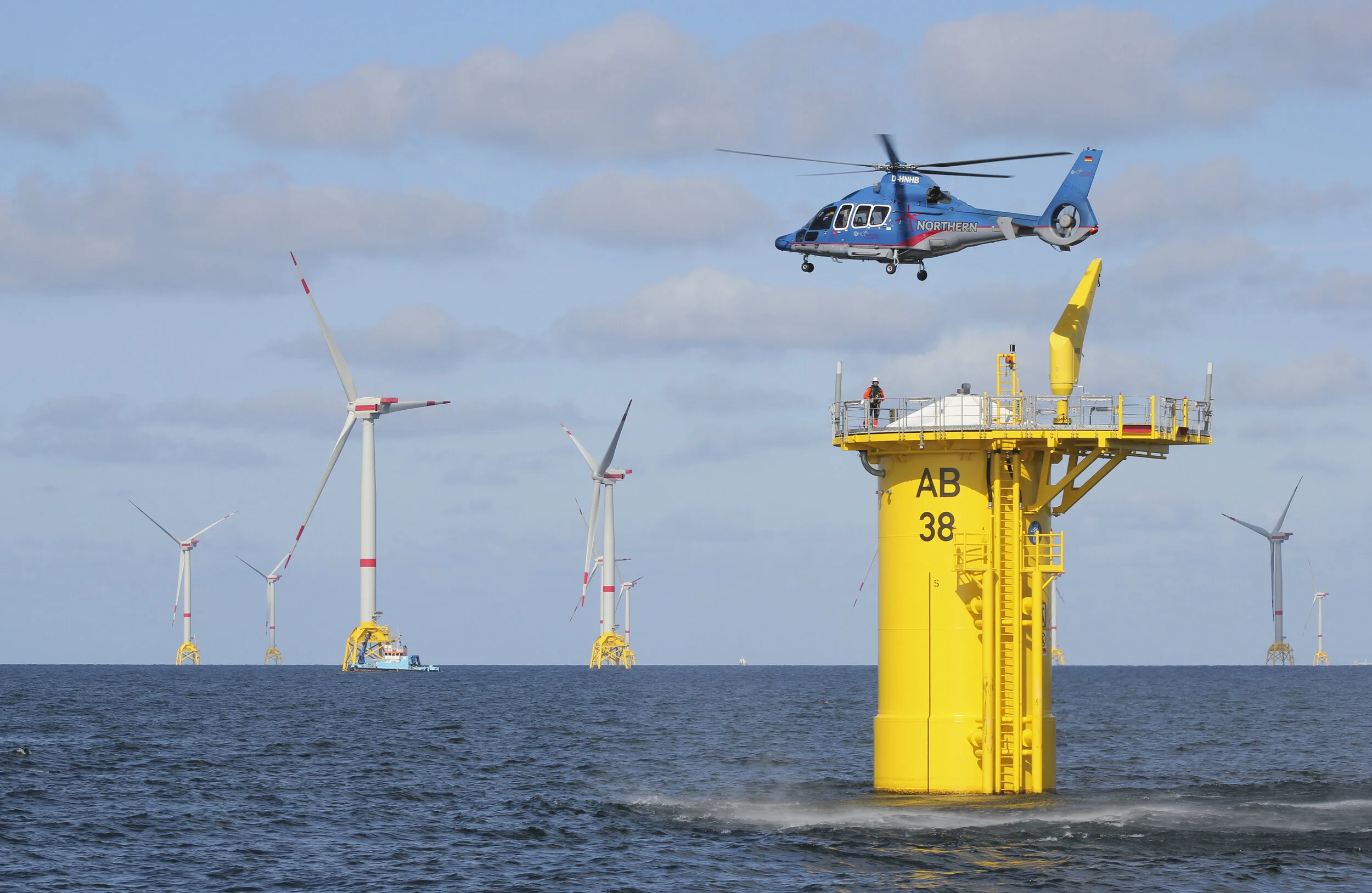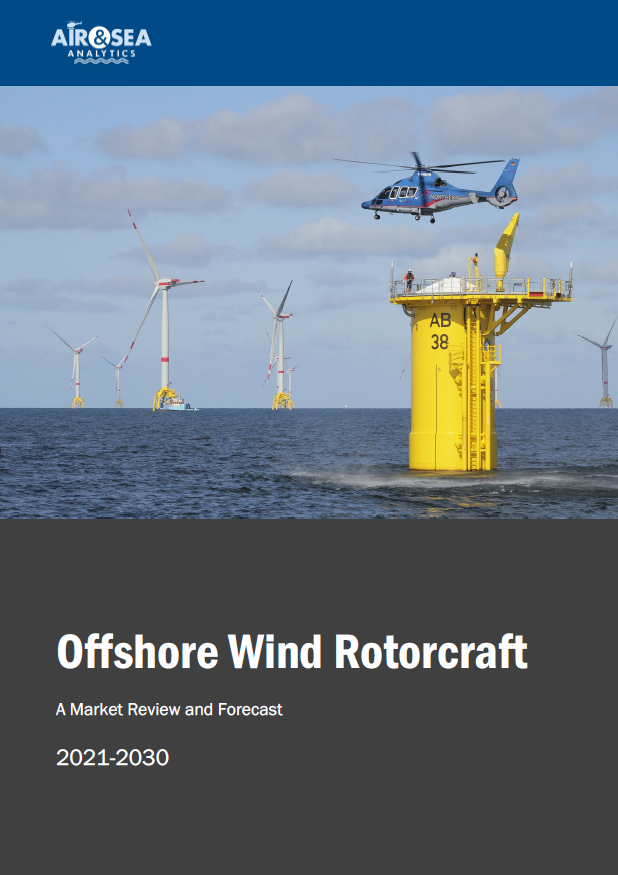Offshore Wind Rotorcraft
A new report from Air & Sea Analytics forecasts compound annual growth of 17% in the requirement for rotorcraft to support offshore wind operations with over $1 billion of additional aircraft required.
The fleet is forecast to expand from the current 27 aircraft to total 126 aircraft by 2030.
A new Report
Air & Sea Analytics has today published a new report taking a ‘deep dive’ into the offshore wind rotorcraft business. The report is intended to provide the industry with a view of the current status and outlook for the offshore wind rotorcraft market. Offshore wind has become a major global industry with many multi-billion-dollar projects being constructed every year. As these projects become larger and further from shore rotorcraft have become a key part of the supply chain in construction and maintenance. Whilst OEMs have been quick to highlight the potential for the sector as a major new growth opportunity for rotorcraft, the industry has been somewhat opaque in recent years with little clarity on how many aircraft are currently servicing the industry (last year estimates from third parties ranged from 11-40 aircraft) and how many are required in the future.
The purpose of this new report is to explain the drivers of demand for this important sector, build a forecast of future activity based on a granular project by project analysis and translate this to demand for rotorcraft.
Offshore WIND IS A High-Growth, COST-COMPETITIVE POWER GENERATION SECTOR
As we highlighted earlier this month - the energy landscape is changing and the costs of extracting energy from renewable sources is falling to the point where it is cost-competitive for grid connected power generation vs nuclear or hydrocarbon-powered alternatives. Latest estimates from the Department for Business, Energy and Industrial Strategy (BEIS) in the UK forecast that offshore wind projects over the next decade will produce power at an average cost of £47 per megawatt-hour (MWh) compared to £82 per MWh for new gas projects and £92 per MWh for new nuclear.
Offshore wind is entering a period of substantial growth in capacity.
In our research we have identified a substantial volume of offshore wind farm projects that we believe will be built between 2020 and 2030. A total of 467 projects are forecast with 267 GW total capacity which will bring overall installed offshore windfarm installed capacity to over 300 GW by 2030. This will require expenditure of over half a trillion dollars and will establish offshore wind as a major industrial activity in its own right. It is already attracting some of the world’s largest equipment manufacturers and engineering contractors.
Rotorcraft offer the lowest carbon METHOD OF CREW TRANSFER
Having analysed the costs and benefits of transporting crew offshore we believe that rotorcraft are a commercially-attractive proposition to support both the construction and operation of offshore wind farms. Furthermore, we understand that crew transportation by rotorcraft will offer the lowest CO2 per passenger mile of any currently available option and the highest availability to the end user, providing that latest generation aircraft are used.
NEARLY 100 ADDITIONAL HELICOPTERS WILL BE REQUIRED BY 2030
We expect the market will continue to favour the latest light-medium and medium aircraft. The Airbus H145 and Leonardo AW169 models are likely to dominate, along with the smaller Airbus H135. In construction-support we expect to see medium helicopters such as the AW139 and (in the fullness of time) the H160. Larger ‘super medium’ aircraft such as the H175 have previously been used in support of offshore wind construction and may well be used in the future in this application, likewise, the largest offshore rotorcraft such as S-92 could be used in some construction support applications where helidecks allow.
Our ‘bottom-up’ modelling process anticipates that the offshore wind rotorcraft fleet will grow from 27 to 126 over the period to 2030 (CAGR of 17%). The fleet will remain smaller than many other comparable areas such as oil & gas but will still represent a robust and growing opportunity to deploy modern light medium twin helicopters.
The Offshore Wind Rotorcraft report is now available. The report explains the drivers of demand for this important sector, builds a forecast of future activity based on a granular project-by-project analysis and translates this to demand for rotorcraft. The report is ideal for stakeholders in the energy rotorcraft sector. Click here for more information.



